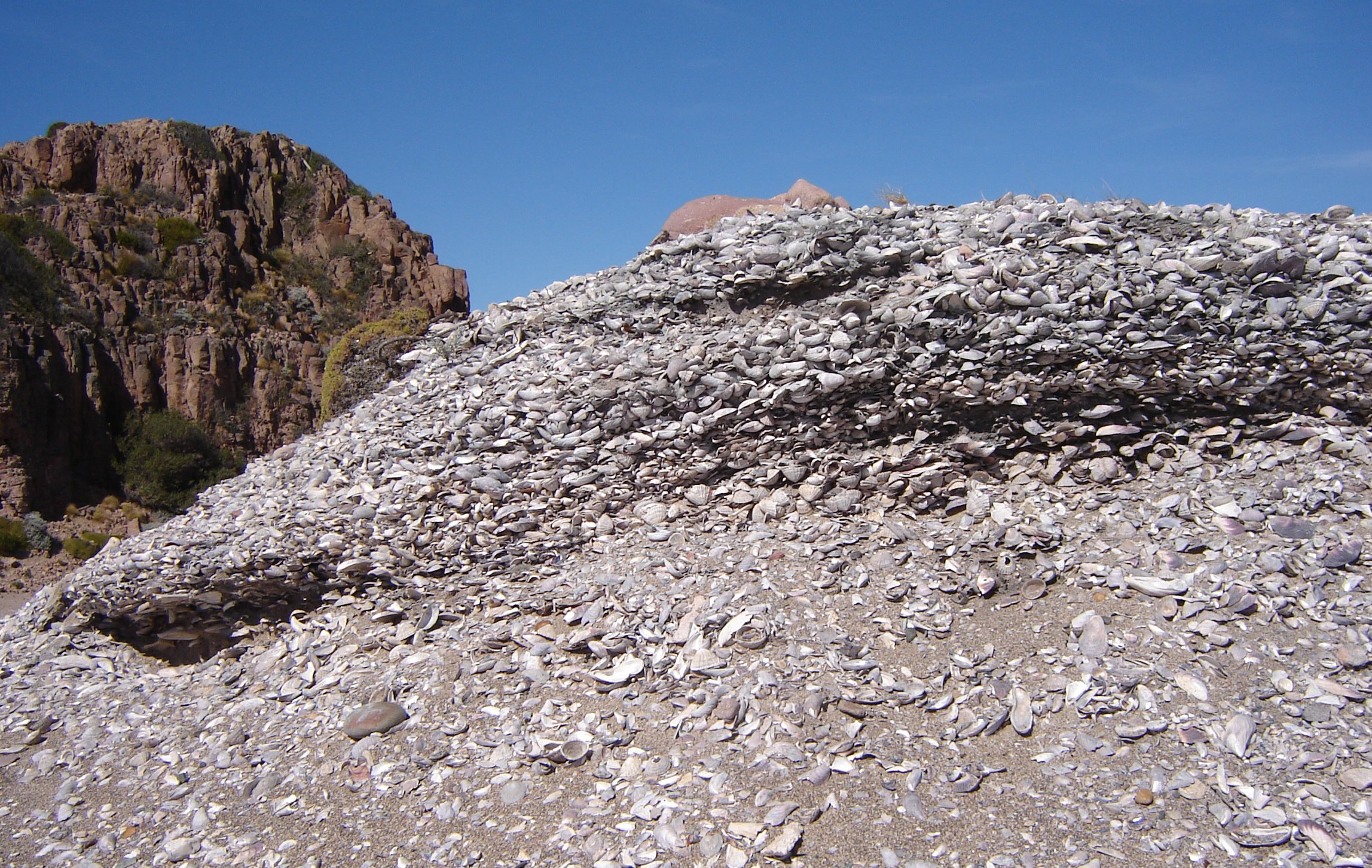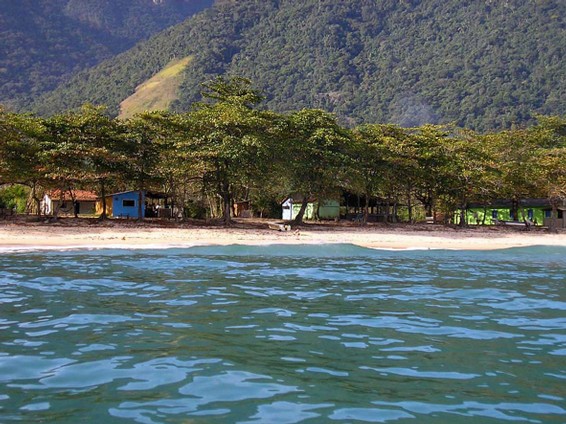|
Ilha Do Tumba Extractive Reserve
The Ilha do Tumba Extractive Reserve ( pt, Reserva Extrativista Ilha do Tumba) is an extractive reserve in the state of São Paulo, Brazil. It protects an area of mangroves and supports a traditional extractive population. Location The Ilha do Tumba Extractive Reserve is in the municipality of Cananéia, São Paulo. It has an area of . The reserve is on the border between the states of São Paulo and Paraná. It adjoins the Itapanhapima Sustainable Development Reserve to the east. The reserve contains a well-preserved area of mangroves, and holds sambaquis that are among the oldest archaeological sites on the south coast. It has the objective of conserving this area of the Lagamar and supporting crab collection and fishing by the local communities. It also provides the raw material used to make fish traps, an economically important traditional '' caiçara'' technique. History The Ilha do Tumba Extractive Reserve was created by state law 12.810 of 21 February 2008. This law brok ... [...More Info...] [...Related Items...] OR: [Wikipedia] [Google] [Baidu] |
Cananéia
Cananéia is the southernmost city in the state of São Paulo, Brazil, near to where the Tordesilhas Line passed. The population in 2020 was 12,541 and the area is 1,242.010 km². The elevation is 8 m. The city of Cananéia is host to the Dr. João de Paiva Carvalho research base belonging to the Oceanographic Institute of the University of São Paulo. History Founded in 1531, Cananéia is considered by some to be the oldest city in Brazil (5 months before the foundation of São Vicente ) but due to the lack of official documentation proving this fact, São Vicente is officially the oldest city in Brazil. The historic center of Cananéia still preserves the architectural styles adopted by the first houses from the colonial period to the end of the 19th century. Conservation The municipality contains the Ilha do Cardoso State Park, created in 1962. It contains part of the Tupiniquins Ecological Station. It contains the Mandira Extractive Reserve, established in 2002. The m ... [...More Info...] [...Related Items...] OR: [Wikipedia] [Google] [Baidu] |
Extractive Reserve (Brazil)
An extractive reserve ( pt, Reserva Extrativista or RESEX) is a type of sustainable use protected area in Brazil. The land is publicly owned, but the people who live there have the right to traditional extractive practices, such as hunting, fishing and harvesting wild plants. Definition In the broad sense, an extractive reserve is an area of land, generally state-owned where access and use rights, including natural resource extraction, are allocated to local groups or communities. Extractive reserves limit deforestation both by the local residents, preventing deforestation within their reserve, and by acting as a buffer zone to keep ranching and extractive industry out of the forests beyond. "Extractive reserve" is among the types of sustainable Specific definitions of sustainability are difficult to agree on and have varied in the literature and over time. The concept of sustainability can be used to guide decisions at the global, national, and individual levels (e.g. susta ... [...More Info...] [...Related Items...] OR: [Wikipedia] [Google] [Baidu] |
São Paulo (state)
São Paulo () is one of the Federative units of Brazil, 26 states of the Brazil, Federative Republic of Brazil and is named after Paul of Tarsus, Saint Paul of Tarsus. A major industrial complex, the state has 21.9% of the Brazilian population and is responsible for 33.9% of Brazil's GDP. São Paulo also has the List of Brazilian federative units by Human Development Index, second-highest Human Development Index (HDI) and GDP per capita, the List of Brazilian states by infant mortality, fourth-lowest infant mortality rate, the List of Brazilian states by life expectancy, third-highest life expectancy, and the List of Brazilian states by literacy rate, third-lowest rate of illiteracy among the federative units of Brazil. São Paulo alone is wealthier than Argentina, Uruguay, Paraguay, and Bolivia combined. São Paulo is also the world's twenty-eighth-most populous Administrative division, sub-national entity and the most populous sub-national entity in the Americas. With more than 4 ... [...More Info...] [...Related Items...] OR: [Wikipedia] [Google] [Baidu] |
Paraná (state)
Paraná () is one of the 26 states of Brazil, in the south of the country, bordered on the north by São Paulo state, on the east by the Atlantic Ocean, on the south by Santa Catarina state and the province of Misiones, Argentina, and on the west by Mato Grosso do Sul and Paraguay, with the Paraná River as its western boundary line. It is subdivided into 399 municipalities, and its capital is the city of Curitiba. Other major cities are Londrina, Maringá, Ponta Grossa, Cascavel, São José dos Pinhais and Foz do Iguaçu. The state is home to 5.4% of the Brazilian population and has 6.2% of the Brazilian GDP. Crossed by the Tropic of Capricorn, Paraná has what is left of the araucaria forest, one of the most important subtropical forests in the world. At the border with Argentina is the National Park of Iguaçu, considered by UNESCO as a World Heritage Site. At only from there, at the border with Paraguay, the largest dam in the world was built, the Hidroelétri ... [...More Info...] [...Related Items...] OR: [Wikipedia] [Google] [Baidu] |
Itapanhapima Sustainable Development Reserve
The Itapanhapima Sustainable Development Reserve ( pt, Reserva de Desenvolvimento Sustentável de Itapanhapima) is a sustainable development reserve in the state of São Paulo, Brazil. It protects an area of mangrove forests and supports a traditional extractive population. Location The Itapanhapima Sustainable Development Reserve is in the municipality of Cananéia, São Paulo. It has an area of . It adjoins the Ilha do Tumba Extractive Reserve to the west. It supports the artisanal fishermen of the area. The reserve is in the Cananéia lagoon estuary, an important nursery for fish and aquatic mammals. It contains large mangrove swamps managed by the traditional populations of the reserve and used by some families for extraction of the native oyster and uçá crab. History The Itapanhapima Sustainable Development Reserve was created by state law 12.810 of 21 February 2008. This law broke up the old Jacupiranga State Park and created the Jacupiranga Mosaic The Jacupiranga Mo ... [...More Info...] [...Related Items...] OR: [Wikipedia] [Google] [Baidu] |
Sambaquis
A midden (also kitchen midden or shell heap) is an old dump for domestic waste which may consist of animal bone, human excrement, botanical material, mollusc shells, potsherds, lithics (especially debitage), and other artifacts and ecofacts associated with past human occupation. These features provide a useful resource for archaeologists who wish to study the diets and habits of past societies. Middens with damp, anaerobic conditions can even preserve organic remains in deposits as the debris of daily life are tossed on the pile. Each individual toss will contribute a different mix of materials depending upon the activity associated with that particular toss. During the course of deposition sedimentary material is deposited as well. Different mechanisms, from wind and water to animal digs, create a matrix which can also be analysed to provide seasonal and climatic information. In some middens individual dumps of material can be discerned and analysed. Shells A shell mid ... [...More Info...] [...Related Items...] OR: [Wikipedia] [Google] [Baidu] |
Caiçaras
Caiçaras () are the traditional inhabitants of the coastal regions of the southeastern and southern Brazil. They form a distinct group of people, descended from Africans, indigenous people, and Europeans. Their traditional way of life based on subsistence agriculture, hunting and fishing is threatened by real estate speculation, restrictive laws and declining fish stocks. Origins The name ''caiçara'' comes from the Tupi language ''ka'aysá'' (or ''ka'aysara''), a rustic fence made of tree branches. The fences would surround a village, or would be used for trapping fish. Over time it came to be used for the huts built on the beaches, and then for the inhabitants. The people are of mixed African, indigenous, and European origins. Their origins and customs are similar to the caipiras who live further inland. In literature the caiçaras are represented as traditional, primitive, isolated and self-sufficient fishing people. This is an inaccurate stereotype, since it was only with ... [...More Info...] [...Related Items...] OR: [Wikipedia] [Google] [Baidu] |
Jacupiranga State Park
The Jacupiranga State Park ( pt, Parque Estadual de Jacupiranga) was a state park in São Paulo, Brazil. It covered a large, mountainous region that included untouched Atlantic Forest and land occupied by traditional communities. When the park was created in 1969 the residents could no longer legally practice sustainable farming and extraction of forest resources, leading to land use conflicts, which mounted as the BR-116 highway opened the park to squatters from elsewhere. Eventually, in 2008 the park was combined with surrounding territory and broken up into three smaller state parks and various other units in which sustainable development was allowed. Location The Jacupiranga State Park was divided between the municipalities of Barra do Turvo, Cajati, Cananéia, Eldorado, Iporanga and Jacupiranga, in the Vale do Ribeira region of the, south of the State of São Paulo. Most of the park was in the Ribeira de Iguape River basin. It had an area of about . Altitudes ranged fr ... [...More Info...] [...Related Items...] OR: [Wikipedia] [Google] [Baidu] |
Jacupiranga Mosaic
The Jacupiranga Mosaic ( pt, Mosaico do Jacupiranga) is a protected area mosaic of 14 units, located in the Atlantic Forest biome within the state of São Paulo of southeastern Brazil. It is centered on the former Jacupiranga State Park. History The Jacupiranga Mosaic was created by state law 12.810 of 21 February 2008 with a total area of , including 14 conservation units and 2 planned Private natural heritage reserves. It was the fifth mosaic to be created in Brazil, and was intended to reconcile sustainable economic development with conservation objectives. The Jacupiranga State Park, which had an area of , was expanded to and subdivided into three state parks, Caverna do Diabo, Rio Turvo and Lagamar de Cananéia. The law created five sustainable development reserves and one extractive reserve An extractive reserve ( pt, Reserva Extrativista or RESEX) is a type of sustainable use protected area in Brazil. The land is publicly owned, but the people who live there have ... [...More Info...] [...Related Items...] OR: [Wikipedia] [Google] [Baidu] |
Protected Areas Of São Paulo (state)
Protection is any measure taken to guard a thing against damage caused by outside forces. Protection can be provided to physical objects, including organisms, to systems, and to intangible things like civil and political rights. Although the mechanisms for providing protection vary widely, the basic meaning of the term remains the same. This is illustrated by an explanation found in a manual on electrical wiring: Some kind of protection is a characteristic of all life, as living things have evolved at least some protective mechanisms to counter damaging environmental phenomena, such as ultraviolet light. Biological membranes such as bark on trees and skin on animals offer protection from various threats, with skin playing a key role in protecting organisms against pathogens and excessive water loss. Additional structures like scales and hair offer further protection from the elements and from predators, with some animals having features such as spines or camouflage servi ... [...More Info...] [...Related Items...] OR: [Wikipedia] [Google] [Baidu] |
.jpg)


